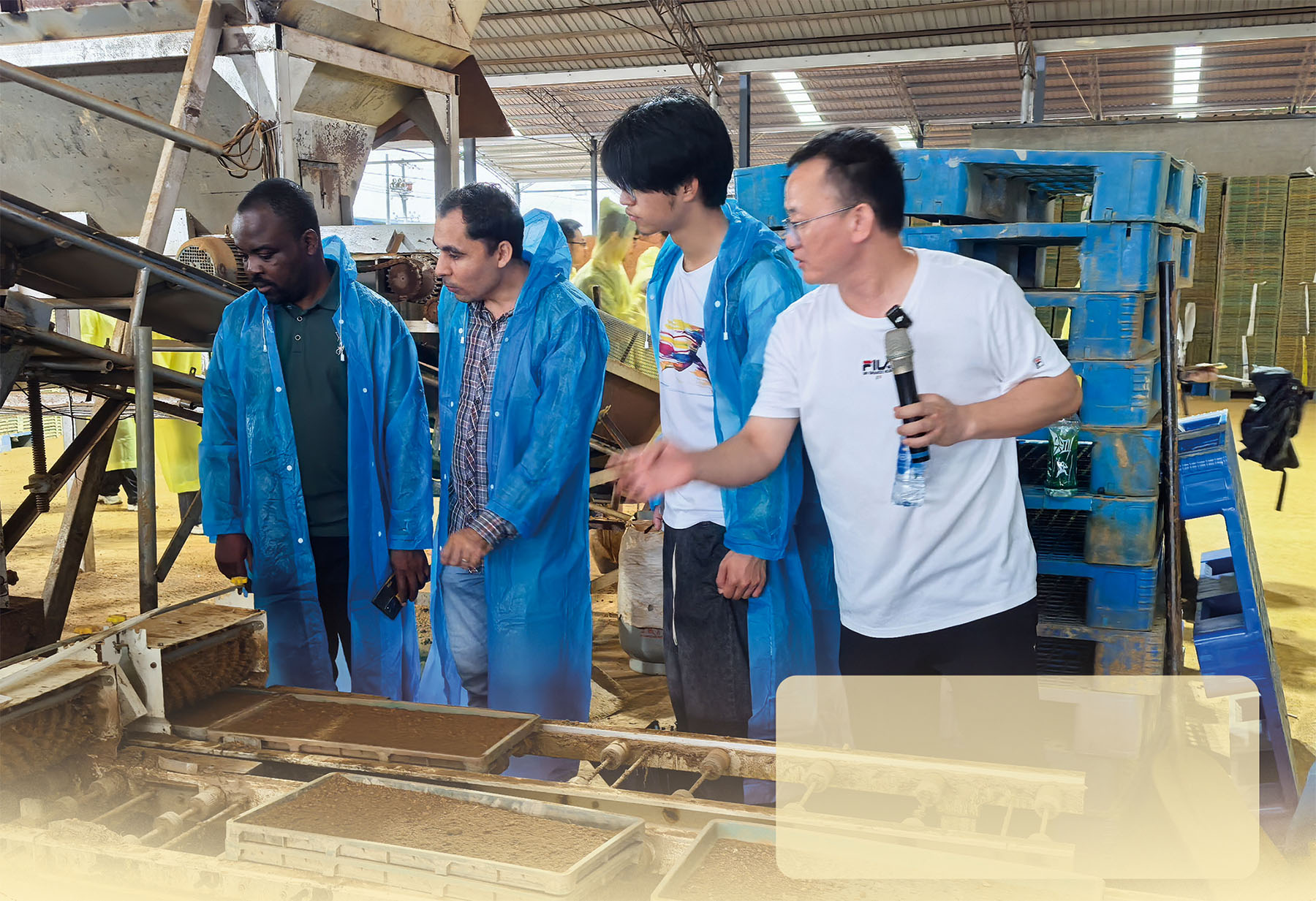A journey from classroom to countryside reveals how modern farming and cultural exchange are sowing seeds of cooperation.

On a crisp June morning in 2025, a bus carrying eight international students from Jiangxi Agricultural University (JXAU) set off for Anyi county, Nanchang, the capital of Jiangxi province.
Among them was Salma Omar, a 30-year-old postgraduate student from Tanzania studying clinical veterinary medicine. Her eyes widened as she gazed out at the sprawling rice paddies.
Their first stop, Jiangxi Green Energy Agricultural Development Co., Ltd., left a lasting impression. "I've never seen anything like this," Omar said, pointing to a towering grain dryer. "In Tanzania, we still rely on sun-drying. A machine like this could revolutionize our post-harvest process."
Saira Ghafoor, a 27-year-old PhD student from Pakistan majoring in agriculture, nodded in agreement as she examined a drone used for precision spraying.
"China has all the modernization and technology available right here in the villages," she said. "That's why I chose to come to China. I think I've joined the best country for my career."
READ MORE: Spring planting boosted by satellites, new agricultural tech
Organized by JXAU, the program was designed to help international students better understand China's rural development. It combined theoretical lectures with field visits to green energy enterprises and model villages, as well as discussions with local farmers and tech experts.
"We created this program to showcase China's path to agricultural modernization," said Huang Yisheng, vice dean of the university's School of Marxism.
Huang explained that the initiative also aimed to deepen international students' understanding of China's national context and the "Three Rural Issues" — agriculture, rural areas, and farmers. It also sought to promote agricultural cooperation and cultural exchange with countries and regions involved in the Belt and Road Initiative.
"Through what they learn, see, and hear in China, these international students are bound to become bridges between China and their home countries," he said. "They will share China's story in this new era, offering their own unique perspectives to the world."

Modernization in action
Omar was particularly impressed by China's investment in rural infrastructure and its efforts to preserve heritage houses. "In China, I've seen how well-maintained rural houses are — they retain their historical charm while integrating modern facilities," she said.
She pointed out that one of the biggest challenges facing rural areas in her home country is poor infrastructure, which often leads to the deterioration of historic buildings and a lack of modern amenities.
She expressed hope that Tanzania could learn from China's approach to balancing rural development with heritage preservation — a model that could both improve villagers' quality of life and boost rural tourism.
Saira Ghafoor highlighted the gap between China's advanced agricultural technologies and the traditional farming methods still widely used in Pakistan. "In Pakistan, we struggle with issues like water shortages, outdated techniques, and limited market access," she said.
She added that many farmers in Pakistan don't have direct access to companies and modern technologies, which makes it difficult for them to adopt innovative practices. She plans to share China's experience with her peers, advocating for joint research projects and the introduction of smart farming technologies to enhance agricultural productivity and food security.
Mvuyeni Nyasulu, a PhD student from Malawi, was particularly inspired by a local agricultural company's green energy model. The company provides trusteeship management services for farmers, covering the entire process — from plowing and planting to fieldwork and harvesting. Its support includes agricultural supplies, machinery, technical guidance, integrated pest management, sales channels, financing guarantees, and more.
"The green energy model is truly innovative," Nyasulu said, highlighting how it empowers farmers both economically and socially, turning them into stakeholders and owners of valuable agricultural assets.
"This approach really demonstrates how combining green energy, economic incentives, and scientific support can revitalize rural areas. This framework can inspire similar efforts in other developing countries or regions," he added.
Seeds of collaboration
As a student specializing in crop genetics and breeding, Nyasulu is focused on developing high-yield, climate-resilient crops. He believes his research can help address food security challenges in Malawi and beyond.
He also sees strong potential for collaboration with Chinese researchers and institutions, sharing knowledge and experiences to accelerate agricultural innovation.
"Key areas might include technology transfer, combining China's advanced technologies with our local resources and specific needs," he said.
Ghafoor expressed similar views. Inspired by China's emphasis on self-reliance and its innovative agricultural strategies, she believes Pakistan can learn from China's example and explore its own course toward agricultural modernization.
She hopes to contribute by developing climate-resilient crop varieties and promoting sustainable farming practices in Pakistan.
"China doesn't follow other countries — it makes its own rules and policies," she observed.
Ghafoor also saw village tourism as a promising path for rural development, hoping that Pakistani villages could attract tourists with their rich cultural heritage and natural beauty.
Meanwhile, Omar envisioned a future where China and Tanzania work together across various agricultural sectors, including large-scale farming, farmer training, and irrigation projects.
ALSO READ: Farmers weather adversity to reap record grain harvests
Among these cooperative efforts and agricultural initiatives, young people are playing a vital and distinctive role.
"The younger generation, including myself, is essential to driving cultural change and promoting rural revitalization," said Nyasulu. "We bring fresh ideas, energy, technological skills, and the innovative spirit needed for modernization."
Huang emphasized the mutually beneficial relationship between rural development and youth engagement.
"On the one hand, rural revitalization relies on the involvement of young people, as the countryside today faces urgent questions — such as who will farm the land and who will lead its transformation. On the other hand, rural areas provide vast opportunities and a broad platform for young people in this new era to realize their potential," he said.
Contact the writer at guiqian@i21st.cn



